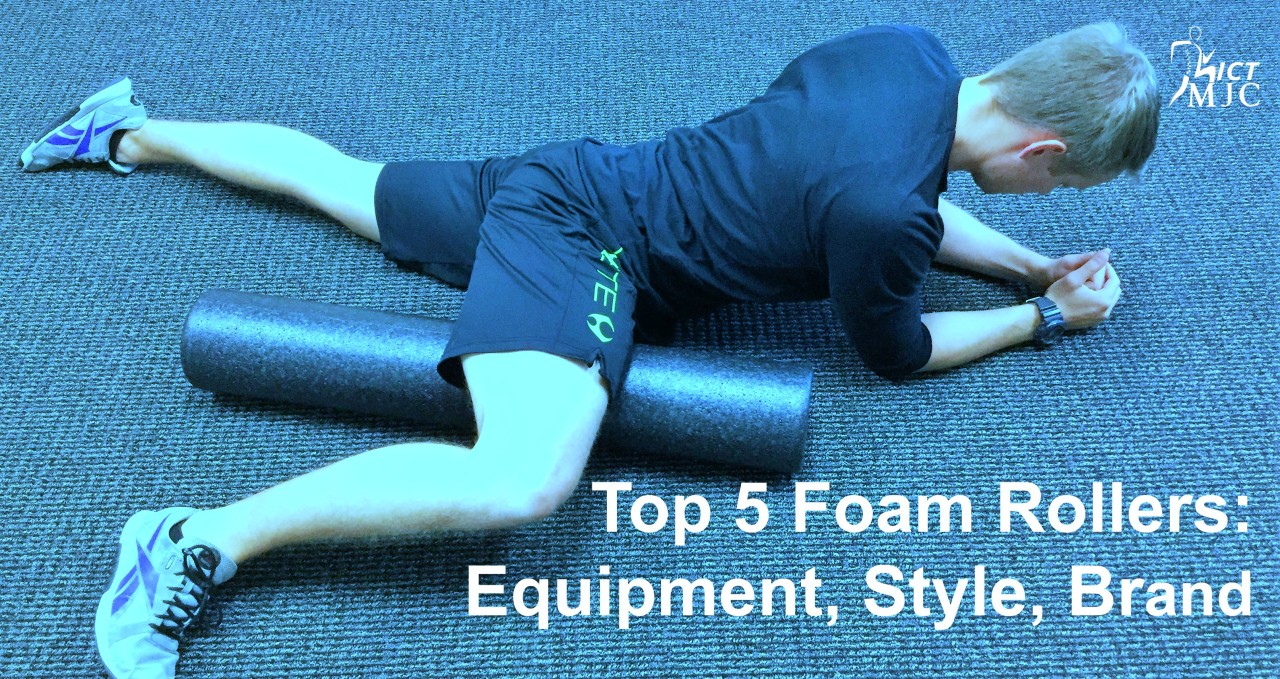Top 5 Foam Rollers: Equipment, Style, Brand
Here is a list of my 5 favorite types, of foam rollers or accessory rollers, in no particular order. Each one has its own unique advantage.
PVC Pipe
- Many crossfit gyms will have a few of these lying around; other than that, PVC pipes are non-existent in gyms. Probably due to some bologna idea like “aesthetics.” Gyms are meant to get things done, not to win a beauty pageant. PVC pipes are entirely worth having, especially if you’re the person that believes in - no pain, no gain. I have used several different diameters and it surprises me how I experience different sensations with different diameters. My favorite area to foam roll, using a PVC pipe, is the lower calf muscles. I have not found any other type of roller that can do the job like the PVC pipe for this area. You can buy some at any local hardware store.
Rogue Lacrosse Ball
- Rogue’s lacrosse ball is pretty similar in density to a standard NOCSAE lacrosse ball. However, they are a little more grippy, which is perfect when using against a wall. They don’t lose density over time like a tennis ball, and are more forgiving and less slippery as compared to a baseball. Definitely worth having and also affordable.
AXIS: High Density Foam Roller
- The AXIS high density foam roller is definitely worth including in your arsenal. They are relatively affordable compared to other brands, and come in 3 lengths: 12 inch, 18 inch, and 36 inch. The 18 inch roller, in my opinion, is worthless. The 12 inch roller’s advantage is in being low profile, and easily storable under a desk. With the 36 inch foam roller, you can embrace your inner lazy person by laying on your back with th roller vertical along the spine, and allowing the chest muscles to passively open up.
- The rollers are 6 inches in diameter, however, they also sell the 6 inch diameter foam roller cut in half. It does not roll, but it is fantastic for shoulder rotation drills without having to jimmy-rig other equipment. The 3 inch is definitely a perk piece, not a necessity.
The Grid
- TriggerPoint did a fantastic job with these foam rollers. The Grid is great for beginners of foam rolling. They have a hollow, dense, inner core with a soft and more compressible outer layer. This is a big advantage compared to filled-in foam rollers like Axis. My personal favorite Grid roller is the 4 inch foam roller called the "Grid Mini". This is definitely a case when bigger is not better. Being able to throw this in a carry-on or luggage case when traveling, gives this foam roller a big advantage over others.
Rumble Roller
- Simply put, this thing is mean. It can leave bruises when left in an area too long. However, the ridges can act much like thumbs or fingers of a manual therapist. I’m definitely not saying it replaces a manual therapist, but it can compliment a manual therapist by allowing you to simulate the pin-point-like compression. I love using the Rumble Roller around the thighs.
Final Foam Rolling Thoughts
Remember, not all foam rollers are created equal. There are pros and cons to each, from pocket book to hardness. If you haven’t heard of some of these, then you should check them out. Each one has an advantage over the others in its own unique way. Regardless of your tissue quality, get out and try foam rolling today.
About the author
Dr. Keith Sparks is an award-winning chiropractor, functional medicine expert, and the co-founder of ICT Muscle & Joint Clinic. Dr. Sparks’ emphasis of care originated within the fields of rehabilitation, soft-tissue therapies, and chiropractic. To date, he has brought this unique combination of skills into union with functional medicine. The sole purpose of intertwining these distinct skills, knowledge, and services is to provide incomparable care to his local community. Dr. Keith Sparks is often seen in the Wichita, KS community speaking at business events and teaching health and performance classes.
